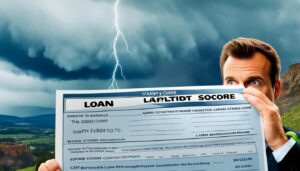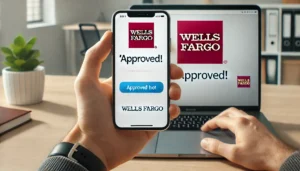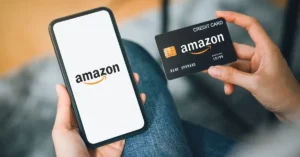What if your next big purchase could also help the planet? Green loans are more than just money. They support green projects and help us live more sustainably. More people and businesses are now using green loans to make a big difference.
We’ll explore what green loans are and how they help our planet. They fund things like solar panels and energy-saving home upgrades. If you want to lower your carbon footprint or invest in a greener world, learn how green loans can help.
Understanding Green Loans
Green loans help fund projects that are good for the environment. They are key for those wanting to invest in sustainable projects. This way, both people and businesses can work on projects that help the planet.
Definition and Purpose
Green loans are for projects that help the environment. They support things like solar panels, energy-saving buildings, and green upgrades. The goal is to make the world a better place, one project at a time.
Key Features
Green loans have special features that make them different. Some of these include:
- Lower Interest Rates: Green loans often have better rates to encourage eco-friendly choices.
- Extended Repayment Terms: These loans can be paid back over a longer time, easing the financial load.
- Eligibility for Incentives: Borrowers might get extra help from the government or other groups for green projects.
Benefits to Borrowers
Choosing green loans has many advantages. They usually have lower interest rates, making projects more affordable. Plus, they help increase property value and cut down on costs. And, they play a big role in protecting our environment.
| Feature | Green Loans | Traditional Loans |
|---|---|---|
| Interest Rates | Typically Lower | Standard Rates |
| Repayment Terms | Extended | Standard |
| Eligibility for Incentives | Available | Not Common |
Eco-Friendly Financing Options
Explore the many eco-friendly financing options today. This section covers funding for green projects like solar panels, energy-saving home upgrades, and electric cars. These loans help cut down on carbon emissions and support a greener future.
Solar Panel Installations
Solar financing is key for going green. With tax credits and rebates, solar power systems are more affordable. Loans and leases for solar panels make it easier for homes to use renewable energy. This cuts down on energy bills and helps the planet.
Energy-Efficient Home Improvements
Energy-saving loans are vital for green home upgrades. Improvements like better insulation and smart home tech lower energy use. Banks offer good deals on these loans, pushing for more sustainable homes.
Electric and Hybrid Vehicles
Electric and hybrid cars offer a big chance for eco-friendly financing. More people are choosing these cars, and loans are available to help. These loans have lower rates and longer payback periods, making green cars more reachable. They save money on gas and cut down emissions.
| Eco-Friendly Project | Financing Option | Benefits |
|---|---|---|
| Solar Panel Installations | Solar financing, lease agreements | Reduced energy costs, renewable energy source |
| Energy-Efficient Home Improvements | Energy-saving loans | Lower energy bills, improved home value |
| Electric and Hybrid Vehicles | Auto loans with favorable terms | Fuel savings, reduced emissions |
Sustainable Lending Practices
Sustainable lending practices are key to linking financial services with environmental goals. Banks and financial institutions are now focusing on green investments and eco-friendly lending. This ensures funds go to projects that help the environment and society.
Protocols and guidelines guide these practices. The main goal is to reduce environmental risks and support projects with big ecological benefits. Before giving loans, lenders check the environmental impact of projects. This makes sure each investment is green and sustainable.
Ethical banking means being open and responsible. Financial institutions that follow this way carefully look at the social and environmental effects of their loans. They do detailed checks during the loan approval process to make sure they’re lending in an eco-friendly way.
To understand sustainable lending better, let’s look at some important points:
- Environmental Impact Assessment: Projects are carefully checked to have little to no bad environmental effects.
- Transparency: Banks clearly tell everyone about the good and bad environmental effects of their projects.
- Long-term Sustainability: Projects are chosen to help the environment for a long time and make it stronger.
Sustainable lending helps make our planet greener and builds trust with people looking for ethical banking. By supporting green investments, banks help create a sustainable future.
Comparing Green Loans to Traditional Loans
It’s important to know the differences between traditional and green loans. This helps borrowers make the best choice for their money. We’ll look at interest rates, loan terms, and who can get them.
Interest Rates and Terms
Interest rates and terms differ a lot between traditional and green loans. Traditional loans have rates based on the prime rate and your credit score. Green loans might have better rates because of government or bank incentives for eco-friendly projects.
| Loan Type | Average Interest Rate | Typical Loan Term | Additional Benefits |
|---|---|---|---|
| Traditional Loans | 3-7% | 5-30 years | Standard |
| Green Loans | 2-5% | 7-30 years | Tax incentives, rebates |
Eligibility Criteria
Eligibility criteria also show big differences between traditional and green loans. Traditional loans look at your credit score and financial health. Green loans consider the project’s environmental impact too. This ensures the project helps the planet and saves money.
In short, knowing these differences helps borrowers choose wisely. Green loans offer good rates and specific rules, making them a strong choice over traditional loans.
Choosing the Right Green Loan for You
When looking into eco-friendly financing, it’s important to match the loan with your green projects. This guide will help you choose the right green loans. It covers how to research lenders and tips for applying for a loan.
Assessing Your Needs
First, figure out your sustainability goals. Think about the size of your project and how much it will cost. This helps you find the best green loan for your needs. Picking the right loan is crucial for reaching your environmental goals.
Researching Lenders
Look for lenders that focus on green financing. Find ones with good terms and a history of green lending. Comparing lenders helps you find the best one for your needs. Use this guide to pick a reliable lender.
Application Process
Knowing the application process is key to getting the right loan. Collect all needed documents and learn about loan application tips. This includes financial statements, project plans, and reports on sustainability. A well-prepared application boosts your approval chances.
| Step | Action | Tips |
|---|---|---|
| 1 | Assess Your Needs | Identify and outline your green project objectives and budget. |
| 2 | Research Lenders | Compare terms, interest rates, and lender reputations. |
| 3 | Prepare Documentation | Gather financials, project plans, and sustainability reports. |
| 4 | Submit Application | Follow loan application tips to ensure a complete application. |
| 5 | Review and Sign | Carefully review loan terms before signing the agreement. |
Benefits of Green Loans for the Environment
Green loans are powerful tools that can drive significant environmental benefits. These eco-positive financing options support projects that minimize negative environmental impacts. They foster sustainable development in sectors like renewable energy, green building, and electric transportation.
One of the primary green benefits of green loans is reducing carbon footprints. They finance clean energy projects like solar panels and wind turbines. This reduces our dependency on fossil fuels, a major polluter.
Green buildings, built with eco-friendly materials and energy-efficient systems, also reduce greenhouse gas emissions. This enhances the environment.
Green loans promote sustainable practices. They encourage individuals and companies to use technologies and processes that conserve resources. For example, water-efficient landscaping and energy conservation in homes and businesses save the environment.
Moreover, green loans make environmentally friendly technology more accessible. High upfront costs often stop people from adopting these technologies. Eco-positive financing makes these technologies affordable, allowing more people and companies to join the green revolution.
- Reduction in carbon emissions through renewable energy projects.
- Promotion of sustainable building practices.
- Enhanced resource conservation via energy and water-efficient technologies.
- Increased accessibility of eco-friendly technologies.
- Community-wide adoption of green practices.
Understanding the environmental impact of green loans inspires more people and organizations to choose green. By funding green projects, borrowers enjoy immediate benefits and contribute to sustainability and climate resilience.
Top Green Financing Solutions
In today’s world, many green financing options are available to support sustainable projects. These choices help meet different needs, from federal green loans to private and community programs. Here, we explore the best green financing solutions for a sustainable future.
Government Programs
Government programs, like federal green loans, are key in promoting sustainable projects. They offer good interest rates and terms to make green projects more affordable. The Federal Housing Administration (FHA) has the FHA Energy Efficient Mortgage to help homeowners improve energy efficiency.
Through federal green loans, the U.S. government supports renewable energy and eco-friendly building renovations.
Private Lenders Offering Green Loans
Recently, the market for private green financing has grown. Many private lenders now offer green loans. Banks like Bank of America and credit unions have green financing products for various projects, like solar panels and electric vehicles.
These options often have lower interest rates or flexible repayment terms. They are attractive for those who want to go green.
Community-Based Initiatives
Community environmental programs focus on sustainability at the local level. They involve local credit unions and banks to offer green financing. Programs like PACE (Property Assessed Clean Energy) provide community-based, hassle-free funding for energy efficiency projects. Additionally, FHA Energy Efficient Mortgages, backed by the federal government, support energy-saving home improvements with favorable terms, while private lenders, such as Bank of America, offer green loans with lower interest rates to encourage renewable energy projects. These initiatives aim to engage the community, reduce carbon footprints, and support sustainable practices effectively.
How to Qualify for Eco-Friendly Loans
To get an eco-friendly loan, you need to meet certain criteria. These criteria focus on your financial situation and the project’s details. Knowing these can help you get approved for an eco-friendly loan.
Financial Requirements
Lenders check your financial health to see if you can repay the loan. They look at several things:
- Credit score: A good score means better interest rates and terms.
- Debt-to-income ratio: A lower ratio shows you can handle more debt.
- Income verification: Documents like pay stubs or tax returns prove your income.
Project Eligibility
Each lender has its own rules for project eligibility. Here are some common ones:
- Environmental impact: Projects that help the environment are more likely to get approved.
- Compliance with standards: Meeting environmental and safety standards helps.
- Cost estimates: Realistic cost estimates make your application stronger.
| Lender | Credit Score Range | Debt-to-Income Ratio | Income Verification | Project Requirements |
|---|---|---|---|---|
| Bank of America | 700-850 | Tax returns, pay stubs | Energy efficiency certifications | |
| Wells Fargo | 680-800 | Two years of tax returns | Environmental impact assessments | |
| Chase Bank | 720-850 | Pay stubs, bank statements | Detailed cost estimates |
Meeting these criteria can help you get an eco-friendly loan. Make sure you meet the financial needs and have a solid project plan. This will increase your chances of approval.
Understanding Climate-Friendly Credit
Climate-friendly credit is key for funding green projects. Knowing the credit score needs, documents required, and approval steps can help you get these loans. This knowledge boosts your chances of success.
Credit Score Requirements
To get climate-friendly credit, you need a good credit history. Lenders want a credit score of 650 or more. This ensures you have a stable financial record.
Documentation Needed
When applying for climate-friendly credit, you’ll need to show proof of income, tax returns, and project plans. Having these documents ready speeds up the approval. It also shows you’re serious about going green.
Approval Process
The approval for climate-friendly credit involves checking your finances and green plans. Lenders make sure your project is eco-friendly and profitable. They look at the green loan requirements closely.
- Submit application with necessary documentation
- Credit score evaluation
- Review of sustainability plans
- Final approval and loan disbursement
Conclusion
In today’s world, fighting climate change and protecting our environment is crucial. This article has shown how green loans are key to a sustainable future. We’ve looked at what green loans are, their benefits, and how they compare to regular loans.
Green loans have a big impact, helping not just individuals but also communities and the planet. They support projects like solar panels, energy-saving home upgrades, and buying electric cars. This shows how our financial choices can help the environment.
The future of green lending looks bright, with new improvements and more people using eco-friendly credit. As more people see the value in these options, green loans will become a big part of finance. They offer financial help and help protect our planet for the next generation.









